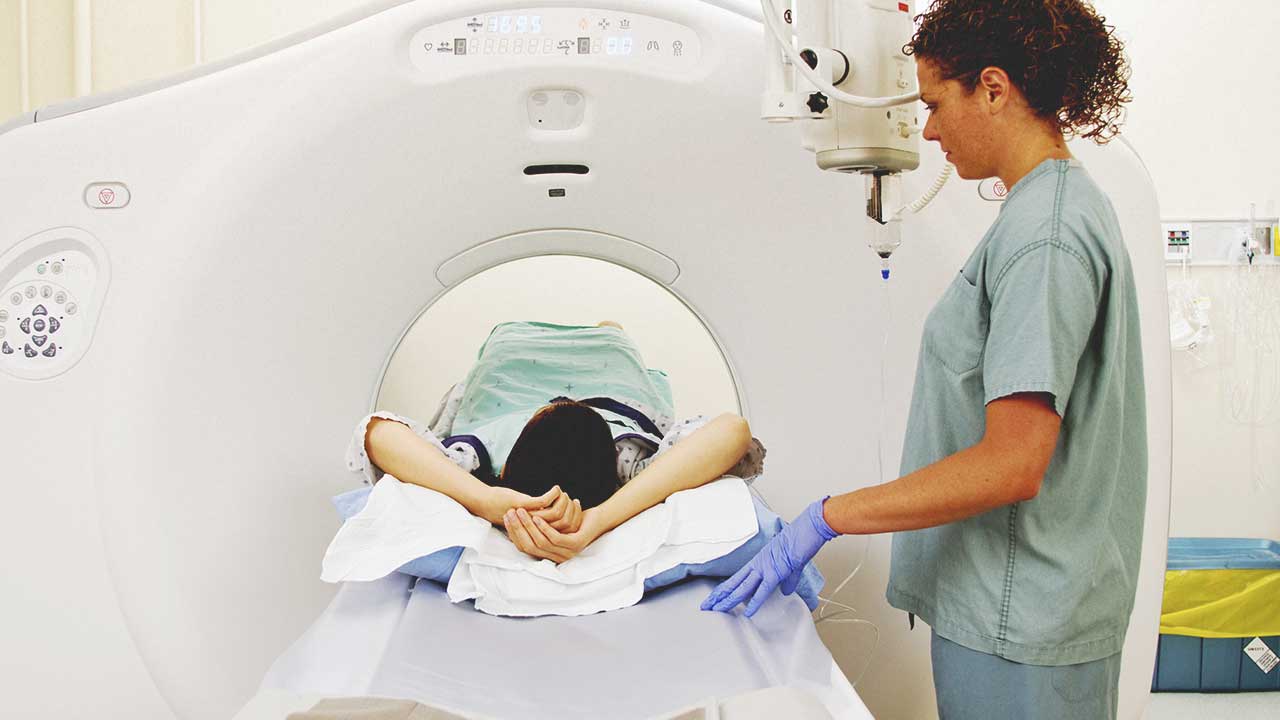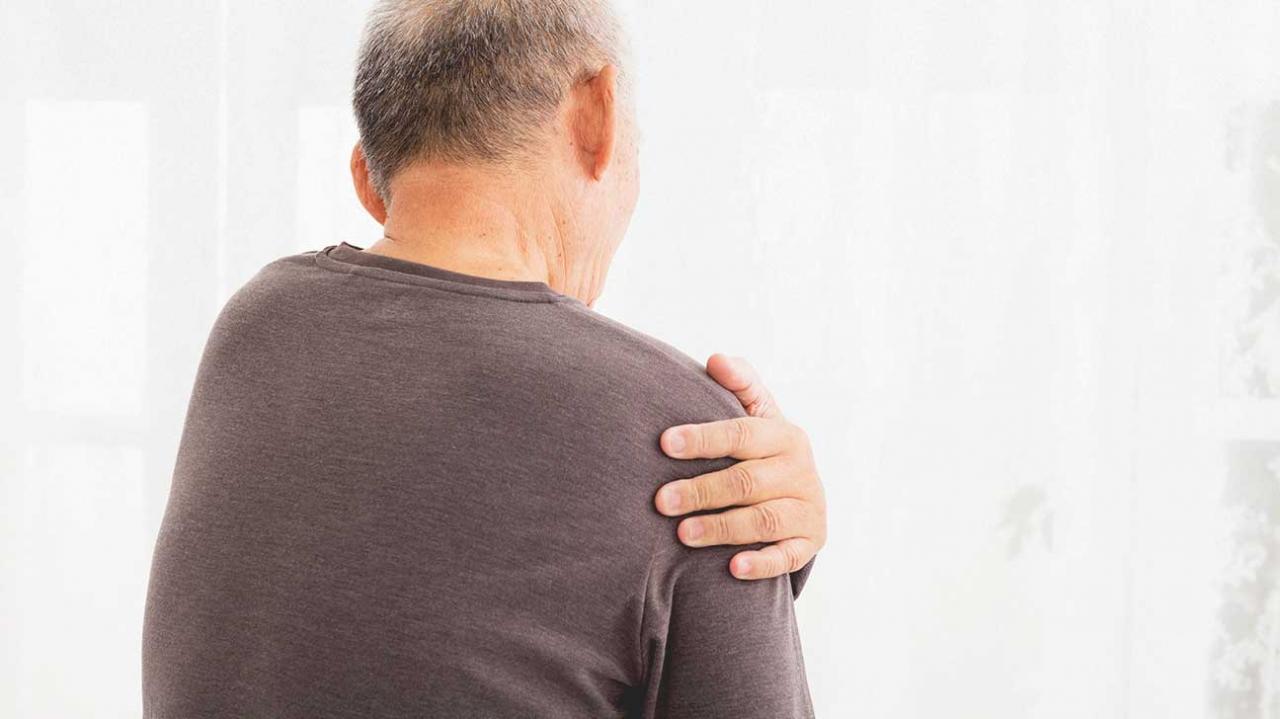Whether it’s a dull ache or a sharp stab, back pain is among the most common of all medical problems. In any three-month period, about one-fourth of U.S. adults suffer through at least one day of back pain.
Many people lump all back aches and pains together as a “bad back.” But there are actually many causes for back pain, including muscle spasms, ruptured disks, back sprains, osteoarthritis, infections, and tumors. One possible cause that rarely gets the attention it deserves is ankylosing spondylitis (AS), a form of arthritis that’s associated with long-term inflammation of the joints in the spine.
If you’ve never heard of AS, you’re certainly not alone. Yet it’s more prevalent than you might think. AS is head of a family of diseases — also including psoriatic arthritis and reactive arthritis — that cause inflammation in the spine and joints. As many as 2.4 million U.S. adults have one of these diseases, according to a 2007 study published by the National Arthritis Data Workgroup. So maybe it’s time you got to know AS better.
Ankylosing spondylitis 101
AS mainly affects the spine and sacroiliac joints (places where your spine joins your pelvis). Inflammation in these areas can cause back and hip pain and stiffness. Eventually, long-lasting inflammation may lead some bones of the spine, called vertebrae, to fuse together. This makes the spine less flexible and may lead to a stooped-over posture.
At times, AS also affects other joints, such as those of the knees, ankles, and feet. Inflammation in joints where your ribs attach to the spine may stiffen your ribcage. This limits how much your chest can expand, restricting how much air your lungs can hold.
Occasionally, AS affects other organs too. Some people develop inflammation of their eyes or bowel. Less often, the largest artery in the body, called the aorta, may become inflamed and enlarged. As a result, heart function may be impaired.
How the disease progresses
AS is a progressive disease, which means that it tends to get worse as time goes by. Typically, it starts with pain in your low back and hips. Unlike many kinds of back pain, however, the discomfort of AS is most severe after a rest or upon rising in the morning. Exercise often helps it feel better.
Typically, the pain comes on slowly. Once the disease is established, the symptoms may ease and worsen for periods of time. But as the years pass, the inflammation tends to move up the spine. It gradually causes greater pain and more restricted movement.
The symptoms of AS vary from person to person. Here’s a look at how they might progress:
- As your lower spine stiffens and fuses: You can’t get close to touching your fingers to the floor when bending over from a standing position.
- As pain and stiffness increase: You may have trouble sleeping and be bothered by fatigue.
- If your ribs are affected: You may find it difficult to take a deep breath.
- If the disease spreads higher up your spine: You may develop a stooped-shoulder posture.
- If the disease reaches your upper spine: You may find it hard to extend and turn your neck.
- If inflammation affects your hips, knees, and ankles: You may have pain and stiffness there.
- If inflammation affects your feet: You may have pain at your heel or the bottom of your foot.
- If inflammation affects your bowel: You may develop abdominal cramps and diarrhea, sometimes with blood or mucus in the stool.
- If inflammation affects your eyes: You may suddenly develop eye pain, sensitivity to light, and blurred vision. See your doctor immediately for these symptoms. Without prompt treatment, eye inflammation can lead to permanent vision loss.
Why treatment is important
There’s still no cure for AS. But treatment can ease its symptoms and may possibly keep the disease from getting worse. For most people, treatment involves taking medication, doing exercises and stretches, and practicing good posture. For severe joint damage, surgery is sometimes an option.
If you’re bothered by long-term pain and stiffness in your low back and hips, don’t just write it off to having a bad back or not being 20 anymore. See your doctor. If it turns out to be AS, early treatment can make you feel more comfortable now, and it might prevent some serious problems in the future.
Quiz: Test your knowlegde on ankylosing spondylitis
Read more in Ankylosing Spondylitis ResourcesMayo Clinic Staff. (2016, November 1). Ankylosing spondylitis: Overview. Retrieved from http://www.mayoclinic.org/diseases-conditions/ankylosing-spondylitis/home/ovc-20261048
Handout on health: Back pain. (2016, August). Retrieved from https://www.niams.nih.gov/Health_Info/Back_Pain/default.asp
Helmick, C. G., Felson, D. T., Lawrence, R. C., Gabriel, S., Hirsch, R., Kwoh, C. K., … Stone, J. H. (2007, December 28). Estimates of the prevalence of arthritis and other rheumatic conditions in the United States: Part I. Arthritis & Rheumatology, 58(1), 15-25. Retrieved from http://onlinelibrary.wiley.com/doi/10.1002/art.23177/full
Questions and answers about ankylosing spondylitis. (2016, June). Retrieved from http://www.niams.nih.gov/health_info/Ankylosing_Spondylitis
What is ankylosing spondylitis? (n.d.). Retrieved from http://www.arthritis.org/about-arthritis/types/ankylosing-spondylitis/what-is-ankylosing-spondylitis.php



